Happy Tuesday. Your Morning Dispatchers are growing increasingly concerned that Major League Baseball owners and players will fail to come together on a deal for anything more than a paltry 48-game season. Why can’t they see that whatever revenue is lost this year will pale in comparison to the opportunity cost of not capitalizing on this potential marketing coup for America’s pastime?
Quick Hits: Today’s Top Stories
-
As of Monday night, 1,960,642 cases of COVID-19 have been reported in the United States (an increase of 18,664 from yesterday) and 110,990 deaths have been attributed to the virus (an increase of 487 from yesterday), according to the Johns Hopkins University COVID-19 Dashboard, leading to a mortality rate among confirmed cases of 5.7 percent (the true mortality rate is likely much lower, between 0.4 percent and 1.4 percent, but it’s impossible to determine precisely due to incomplete testing regimens). Of 20,615,303 coronavirus tests conducted in the United States (379,625 conducted since yesterday), 9.5 percent have come back positive.


-
The National Bureau of Economic Research officially declared yesterday that we’ve entered a recession, with monthly economic activity peaking in February.
-
Congressional Democrats released the Justice in Policing Act of 2020, which now has more than 200 cosponsors. Spearheaded by Nancy Pelosi, Chuck Schumer, and other Democratic leaders, the legislation would aggregate data surrounding racial policing in a national registry, curb qualified immunity, ban both no-knock warrants for drug cases and the use of chokeholds, and more. The White House said President Trump is considering various proposals for police reform, but that reducing immunity was a “nonstarter.” Sen. Mitt Romney criticized the Democrats’ plan—and its lack of Republican cosponsors—as a “message piece,” saying that he will be introducing his own, bipartisan plan in the Senate.
-
Joe Biden’s campaign released a statement expressing opposition to defunding the police, an idea that has been popularized by the anti-police brutality protests throughout the past week. In an interview soon after the statement, Biden said: “I support conditioning federal aid to police based on whether or not they meet certain basic standards of decency.”
-
A new CNN poll shows President Trump’s approval rating falling 7 points in the past month to 38 percent, compared with 57 percent disapproval. The same poll also found Joe Biden leading Trump in a general election matchup 55 percent to 41 percent, expanding the former vice president’s RealClearPolitics polling average margin to +8 percent—the largest lead by that metric Biden has had this year.
The Battle of Lafayette Square, One Week Later
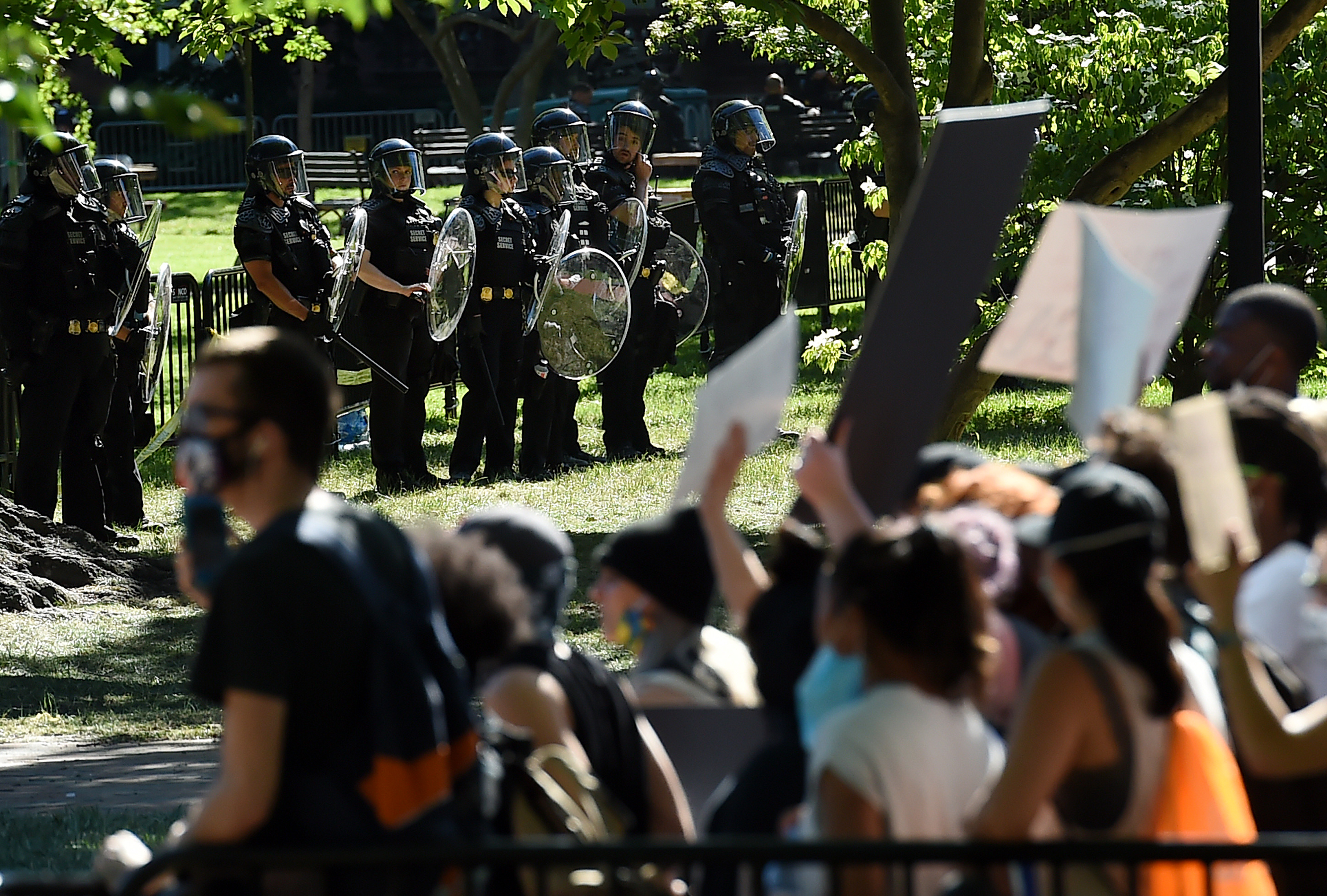
We continue to learn more about President Trump’s White House field trip to St. John’s Episcopal Church—and the events that preceded it.
First, in an interview with Bret Baier on Fox News, Attorney General Bill Barr directly contradicted some of his boss’s recent statements about the protests surrounding the White House. Asked by Baier if he would do anything differently looking back on the events of the week prior, Barr said no.
“We were reacting to three days of extremely violent demonstrations right across from the White House,” he explained. “A lot of injuries to police officers, arson. Things were so bad that the Secret Service recommended the President go down to the bunker.”
Just a few days earlier, President Trump had told Fox News’s Brian Kilmeade he went down to the bunker in the White House “for an inspection,” and even then, only for “a tiny little short period of time.” CNN reported that news coverage of his being whisked down to the bunker frustrated President Trump, leading in part to what transpired in Lafayette Square last Monday.
Earlier in the week, White House press secretary Kayleigh McEnany confirmed reporting from multiple news outlets that Barr had given had given the go-ahead for the aggressive police action. But Barr later denied her claim, saying, “my attitude was ‘get it done,’ but I didn’t say, ‘Go do it.’”
Now, thanks to excellent new video reporting from the Washington Post, we now have a clearer picture than ever of what exactly happened.
The video—which is well worth 12 minutes to watch in full—compiles footage from dozens of cameras with audio from police radio communications to piece together the events of that evening, which many military and political leaders have condemned.
The footage is unnerving, and at times we had to remind ourselves this happened in America, a block from the White House, on a street we’d walked along hundreds of times. A spokesman for the U.S. Park Police, which had released a statement denying the use of tear gas in the park, later said that claim was a “mistake” and walked it back. And the video confirms the use of several different kinds of chemical irritants, including riot-control agents the CDC labels tear gas.
Barr emphasized repeatedly in an interview with CBS on Sunday that the protesters “were not peaceful.” There were certainly clashes with law enforcement around the White House that first weekend—and the Washington Post video shows a handful of protesters tossing eggs, candy bars, and water bottles at the heavily armed troops—but the protests on Monday appeared otherwise nonviolent. And, without doubt, not violent enough to necessitate the level of force depicted.
Barr also told CBS that “there was no tear gas used” and that the park police’s goal was routine—simply “to move the perimeter one block” to build a fence and not to clear a path for President Trump to pose with a Bible at St. John’s Church. But both Barr and Gen. Mark Milley, chairman of the Joint Chiefs of Staff, were seen in Lafayette Square before the coordinated police action, consulting with security officials.
Watch the video for yourself, and let us know what you think in the comments.
WHO’s on First?
If you spend a lot of time keeping up with COVID news, you’ve no doubt already encountered yesterday’s apparent bombshell: A World Health Organization official, Dr. Maria van Kerkhove, declared at a press conference that “it still seems to be rare that an asymptomatic person actually transmits onward to a secondary individual.”
“No asymptomatic transmission!?” you might have asked yourself. “Wasn’t the whole reason we were doing all this social distancing because we already knew the disease was transmitting in people who didn’t seem to have it yet?”
Over at the site today, Andrew has a piece digging into the WHO news and how it relates to that very question. The gist is that the official’s comments read more broadly than she likely intended:
What is “an asymptomatic person”? In the sense we usually use the term, the answer seems obvious: It’s a person who doesn’t feel sick. If Van Kerkhove were saying that only sick-feeling people, or people exhibiting symptoms of sickness like coughing, are capable of spreading the disease, that really would be a foundation-shaking blow to everything we thought we knew about the virus.
Even from her relatively vague comments at the press conference, however, there was reason to suspect this wasn’t the sense in which Van Kerkhove was using the term. Instead, she seemed to be drawing a distinction between what she described as asymptomatic carriers and those in their “pre-symptomatic phase, which means it’s a few days before they actually develop severe symptoms.”
That distinction initially only seemed to add to the confusion: Isn’t a pre-symptomatic person by definition asymptomatic? The matter wasn’t cleared up until after the press conference, and even then you had to squint. A few hours later, Van Kerkhove took to Twitter to point toward some WHO documentation that shed light on the far narrower definition of “asymptomatic” that she had been working with: those infected people who “do not ever develop any symptoms, although they can shed virus which may then be transmitted to others.”
It’s a definition, in other words, which explicitly excludes presymptomatic carriers. And that, in turn, means that the plainest reading of her statement seemingly isn’t the sense in which she meant it at all: “an asymptomatic person” might only rarely transmit the virus, but that doesn’t mean people who are on their way to becoming symptomatic don’t.
You can read the rest of the piece here.
Neighbors Helping Neighbors
The news has been pretty grim lately—80 percent of Americans feel the country is spiraling out control—but that hasn’t stopped do-gooders nationwide from offering a helping hand. And in a real sense, these actions are “news” as much as yet another looting incident. Late last week Rodrick Reynolds, a father of five from Detroit, gave an emotional interview to a local news station about a fire that burned down his house. Within days, friends and family raised more than $400,000 through a GoFundMe campaign they set up on the family’s behalf. The local police are still investigating the source of the fire, which also destroyed his work vehicle and led to the tragic loss of his family dog. “I just can’t believe so many people care this much to support me,” he said. Reynolds plans to use the donations to “make sure other families are taken care of” once he and his family have recovered financially.
Small business owners in Oakland, California, saw a similar outpouring of goodwill this week. Oakstop—a co-working space and gallery in the heart of the city—was damaged by the riots that ravaged the community at the end of May. “As an Oaklander, protesting is part of our heritage,” Trevor Parham, owner of Oakstop said, adding that “in many ways we expect protests to happen.” Local resident Elisse Douglass set up a GoFundMe for the business, with the initial goal of raising $5,000 to get the business back on its feet. She raised $75,000 in just five days, and is now donating money to nonprofits in the area dedicated to addressing racial injustice.
Even kids have led the charge in helping their communities recover from the damage wrought by looting and rioting across the country. Antonio Gwynn Jr.—a teen from Buffalo, New York—began cleaning up garbage and shards of glass on one of his hometown streets at 2 a.m. Monday. After hearing that Gwynn worked for 10 hours straight so that his neighbors could get to work on time the next morning, local residents responded with even more kindness. One man, Matt Block, gifted Gwynn his 2004 red Mustang as a token of appreciation. Medaille College in Buffalo took things one step further by offering Gwynn a full scholarship. He now plans to attend Medaille to major in business.
Kids have also stepped up in Minneapolis, where a middle school food drive was met with thousands of donations on Sunday. The drive was intended to provide groceries to families in the Twin Cities who were affected by the riots. “Donations covered every inch of ground of our parking lot, the grass, everywhere,” said Sanford Middle School Principal Amy Nelson. “We had to also use a neighboring park because we didn’t have enough space here at the school to stack it up.” Given that hundreds of grocery stores in the area have closed due to violence last week, this outpouring of charity provided respite to many families who now live in a food desert.
Celebrities and professional athletes have also played a major role in mobilizing their neighbors to do good. NFL punter Marquette King—who last played for the Denver Broncos—used Twitter to organize a cleanup crew of local residents in downtown Phoenix. “Today was a success. #GeorgeFloyd was a believer in peace and love as well as myself n everyone that was out here today helping people in Phoenix,” King tweeted. “It’s ok to be different! I choose to make an impact in showing love n peace.”
Worth Your Time
-
Tim Alberta, the chief political correspondent for Politico, looks at the shifting attitudes within the Republican Party regarding policing and the criminal justice system. Alberta explores how the GOP’s traditional “law and order” disposition toward law enforcement has evolved with the recent protest movements throughout the country. Republicans are not entirely enthusiastic about the prospect of large-scale criminal justice reform just yet—many powerful figures in the party are still skeptical, and Alberta cautions that a true shift on the issue would require challenging some basics of the GOP’s worldview—but reform-minded Republicans seem to be growing in strength and numbers.
-
If you’ve been on social media in recent days, you might have seen a video of a man on a bike assaulting a group of young people putting up flyers in support of George Floyd. The behavior—from a 60-year-old man—was disgusting, and he’s been arrested and charged with second-degree assault. But for several hours, Twitter detectives incorrectly identified Peter Weinberg—a finance marketing executive—as the culprit, rendering an innocent man subject to thousands of vitriolic and abusive messages. For New York magazine, Olivia Nuzzi spoke to Weinberg about the experience—and wrote about the pitfalls of online justice at the hand of the mob. “He spent the night alone, refreshing Twitter, watching helplessly as people tried to destroy his life.”
-
In the Guardian, Thomas Chatterton Williams has an important message for his fellow progressives: “We often accuse the right of distorting science. But the left changed the coronavirus narrative overnight.” Many of the same ostensibly unbiased public health experts who counseled against reopening efforts for months—and the progressives who echoed their exhortations—are energetically supporting the mass protests throughout the world. “The climate-change-denying right is often ridiculed, correctly, for politicizing science,” Williams writes. “Yet the way the public health narrative around coronavirus has reversed itself overnight seems an awful lot like … politicizing science.” Many progressives have suddenly decided that “social distancing is an issue of merely secondary importance.”
-
Matt Continetti’s newest article for National Review is a compelling diagnosis of the underlying deficiencies in contemporary American society, which Continetti argues are directly responsible for the rioting and destruction of our major cities in recent weeks. Revisiting a famous 1969 lecture by conservative thinker Irving Kristol titled “Urban Civilization and its Discontents,” the article points to the problems in 1960s America that Kristol saw as directly linked to the challenges confronting modern America. Specifically, Continetti writes, “it is the failure of American elites to articulate a compelling justification for the state of our economy and society.” And without a comprehensive justification for the character of our society, our younger generations have turned “to the moral certitudes of the new progressivism,” which threaten the very foundations of our republican democracy. “If the advocates of a free society wish to shape the future in any way,” Continetti argues, “they had better get started reaffirming and demonstrating the moral basis of American civilization. And soon.”
Presented Without Comment
Also Presented Without Comment
Also Also Presented Without Comment
Toeing the Company Line
-
Check out the latest episode of Advisory Opinions to hear our resident legal wonks do a deep dive on all things police reform. No-knock raids, police unions, the intricacies of the “defund the police” movement, and more!
-
Our new summer fellow Nate Hochman has an interesting profile of the controversial New York City Councilman Mark Levine on the website today. Levine is a real character; if you haven’t heard of him before—or even if you have—the article is definitely worth your time.
-
The resurgence of authoritarian nationalism and the return of great power conflicts have created new challenges for proponents of liberal democracy throughout the world, but it’s also exposed the excesses of the utopian liberal internationalism of past decades. Check out Paul Miller’s new article for a fascinating deep dive into the current state of the pax Americana.
Let Us Know
What are your thoughts about that Washington Post video from last week’s protests in Lafayette Square? Does watching what transpired make you feel any differently about the subsequent denunciations from military leaders like Gen. James Mattis?
Reporting by Declan Garvey (@declanpgarvey), Andrew Egger (@EggerDC), Sarah Isgur (@whignewtons), Charlotte Lawson (@charlotteUVA), Audrey Fahlberg (@FahlOutBerg), Nate Hochman (@njhochman), and Steve Hayes (@stephenfhayes).
Photograph of protests in Lafayette Square on June 1 by Olivier Doulier/AFP via Getty Images.
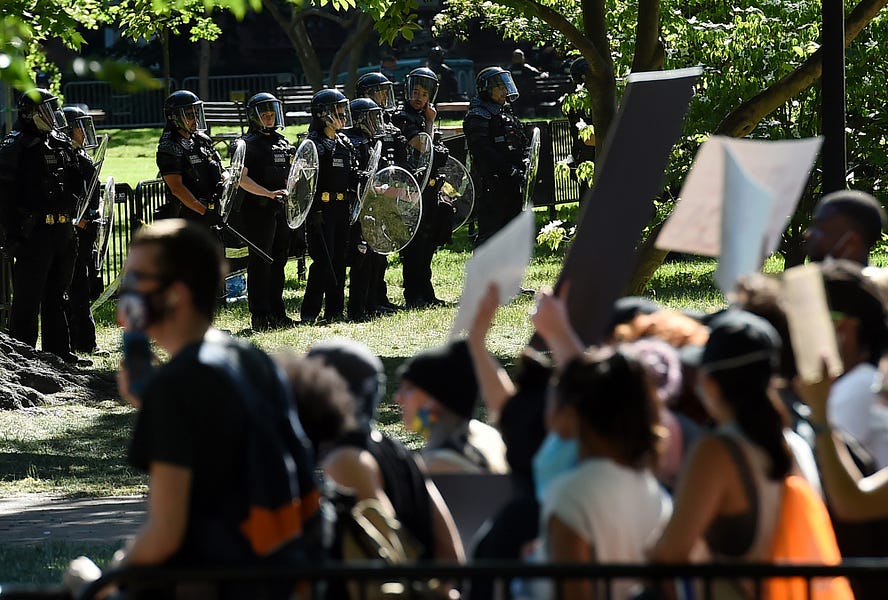
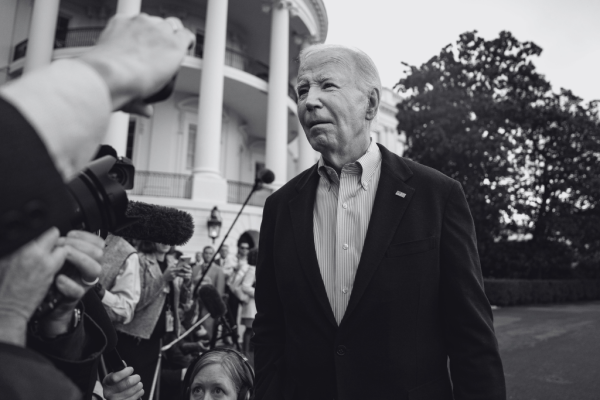
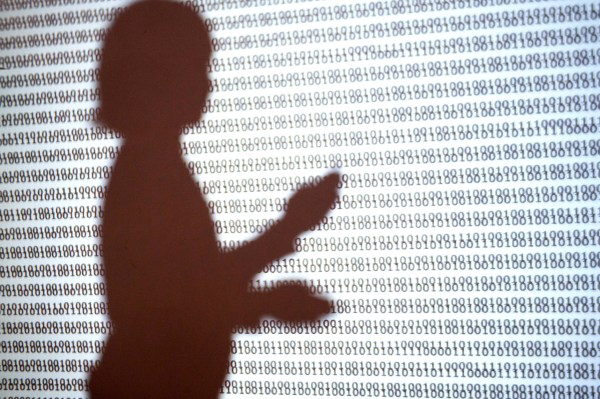
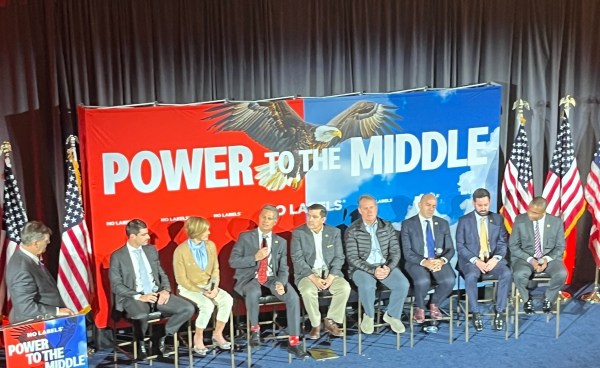
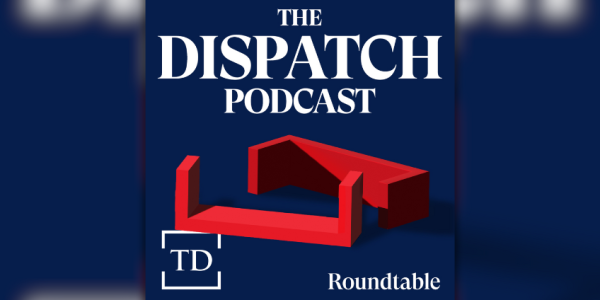
Please note that we at The Dispatch hold ourselves, our work, and our commenters to a higher standard than other places on the internet. We welcome comments that foster genuine debate or discussion—including comments critical of us or our work—but responses that include ad hominem attacks on fellow Dispatch members or are intended to stoke fear and anger may be moderated.
You are currently using a limited time guest pass and do not have access to commenting. Consider subscribing to join the conversation.
With your membership, you only have the ability to comment on The Morning Dispatch articles. Consider upgrading to join the conversation everywhere.